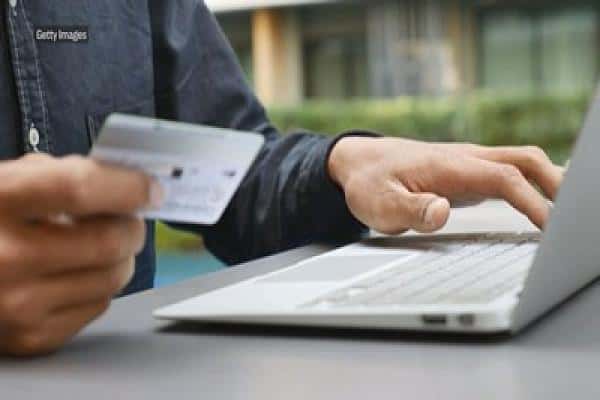
With the Federal Reserve’s latest quarter-point interest rate increase, the seventh such hike in two years, some consumers may need a life jacket.
“Over time, that cumulative effect is growing,” said Greg McBride, the chief financial analyst at Bankrate.com.
For the average American, recent signs of rising inflation, which pushed the central bank into hiking rates beginning in 2015, aren’t necessarily bad. They’re generally considered an indication that the economy is doing well, and pave the way for raises and a better return on your savings.
However, in daily life, higher interest rates mean that you’ll have to pay up to access credit. That includes how much you owe in interest on credit cards or a home equity line of credit.
If you’re concerned about what an additional increase in the Fed’s benchmark rate will mean for your own bank account, mortgage or credit card, as well as student debt, home equity loan and car payment, here’s a breakdown of what’s in store — and what you should do about it.
Credit cards
For starters, credit card rates are already at a record high of 17 percent on average, according to Bankrate.
Most credit cards have a variable rate, which means there’s a direct connection to the Fed’s benchmark rate, and as interest rates rise, card holders will continue to get squeezed.
The typical American has a credit card balance of $6,375, up nearly 3 percent from last year, according to Experian’s annual study on the state of credit and debt in America. Total credit card debt has reached its highest point ever, surpassing $1 trillion in 2017, according to a separate report by the Federal Reserve.
Tacking on a 25-basis-point increase will cost credit card users roughly $1.6 billion in extra finance charges in 2018, according to a WalletHub analysis. Factoring in the six previous rate hikes, credit card users will pay about $9.8 billion more in 2018 than they would have otherwise, WalletHub said.
What you can do about it: Shop around for a better rate or snag a zero-interest balance transfer offer to insulate yourself from further rate hikes. Then, begin to aggressively pay down your balance.
“Make hay while the sun shines,” McBride said.
Mortgages
The economy, the Fed and inflation all have some influence over long-term fixed mortgage rates, which generally are pegged to yields on U.S. Treasury notes, so there’s already been a spike since since the Fed started raising rates.
The average 30-year fixed-rate is now about 4.7 percent, up from 4.09 percent in 2015. That has cost the average homebuyer roughly $42,000, WalletHub found.
Many homeowners with adjustable-rate mortgages or home equity lines of credit, which are pegged to the prime rate, will also be affected.
What you can do about it: Those with an ARM can still refinance into a fixed rate that’s lower than what your ARM will adjust to later this year, McBride said, “but you have to act quickly.”
If you have a HELOC, ask your lender to freeze the interest rate on your outstanding balance or consider refinancing into a fixed-rate home equity loan, although that puts a cap on how much money you can access, McBride added.
Auto loans
For those planning on purchasing a new car in the next few months, today’s change likely will not have any big material effect on what you pay. A quarter-point difference on a $25,000 loan is $3 a month, according to McBride.
“Nobody is going to have to downsize from the SUV to the compact because of rates going up,” he said.
Currently, the average five-year new car loan rate is 4.71 percent, up from 4.34 percent when the Fed started boosting rates, while the average four-year used car loan rate is 5.4 percent, up from 5.26 over the same time period, according to Bankrate.
What you can do about it: If you are car shopping, start by checking that your credit is in good shape, negotiating the price of your vehicle and shopping around to secure the best rate on your financing.
“There are plenty of low rates still available, particularly if you have good credit,” McBride said.
Savings
Stashing some cash in a savings account has not yielded very much, aside from peace of mind, until recently.
While the average interest rate on a savings account is still only 0.09 percent, some top-yielding savings accounts are now as high as 2 percent, up from 1.1 in 2015, according to Bankrate.
With a savings rate, or annual percentage yield, of 0.09 percent, a $10,000 deposit earns just $9 after one year. At 2 percent, that same deposit would earn $200.
What you can do about it: Look for those significantly higher savings rates by shopping around or switching to an online bank. (Online banks are able to offer higher-yielding accounts because they come with less overhead expenses than traditional bank accounts.)
“The Federal Reserve is trying to get inflation to 2 percent — don’t ignore that,” McBride said. “If you’re not keeping pace with inflation, you are losing money.”
Student loans
While most student borrowers rely on federal student loans, which are fixed, more than 1.4 million students a year use private student loans to bridge the gap between the cost of college and their financial aid and savings.
Private loans may be fixed or have a variable rate tied to the Libor, prime or T-bill rates, which means that as the Fed raises rates, borrowers will likely pay more in interest, although how much more will vary by the benchmark.
What you can do about it: If you have a mix of federal and private loans, consider prioritizing paying off your private loans first.
Furthermore, watch out for other high-interest debt that could come back to bite you, such as that credit card balance, said Andrew Josuweit, CEO and president of Student Loan Hero, a student-loan management site.
Already cash-strapped student loan borrowers could get hit from all sides, he said.

